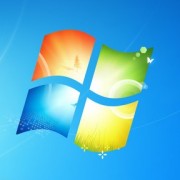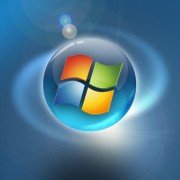How to Fix a Slow iPad
http://ipad.about.com/od/iPad_Troubleshooting/ss/How-To-Fix-A-Slow-iPad.htm
"My iPad Is Running Slow"

Is your iPad running slow? Does it seem to get bogged down after
a few hours? This is not an uncommon problem. It is usually caused by
an app that is running in the background, which can lead to the app
taking up too much memory or processing power. Luckily, this is also
relatively easy to fix.
First: Purge Apps From Memory
The most common problem for an iPad running slow is being low on memory or having too many apps running in the background. The iPad multitasks by suspending applications that are no longer active, but allowing a portion of the app to keep running. In this way, Pandora can still send music to your speakers even after you've closed it.
To close the application, we need to bring up a list of all running applications. You can do this by double clicking the home button at the bottom of your iPad. (It's the circular button you use to close iPad apps.) When you press it twice in quick succession, your most recent apps are shown as small windows with their associated icon below it.
To close an app, touch the window, and while keeping your finger on the screen, swipe toward the top of the screen. This gesture resembles "flicking" the app off the iPad. Remember: you touch the app window, not the app icon.
Go ahead and close the first four or five apps and see if that helps. If it doesn't, proceed to step two.
Note: If you have not upgraded to the most recent operating system, you may get a different screen when double-clicking the home button. The old task manager has all of the application icons lined up across the bottom of the screen with no associated windows. Find out how to close apps using an older version of iOS.
Next: Reboot the iPad
Sometimes closing down apps simply won't do the trick. In this case, rebooting the iPad is the best recourse. This will flush everything from memory and give your iPad a clean start.
To reboot the iPad, hold down the sleep/wake button button until instructions appear telling you to slide a button to power off the iPad.
When you slide the button, the tablet will shut down and the iPad's screen will go completely dark.
Boot the iPad back up by holding down the sleep/wake button again. You will first see the Apple logo on the screen and your iPad should boot up shortly. Your iPad should run quicker, but if it starts bogging down, keep in mind the apps that are running at the time. Sometimes, a single app can cause the iPad to begin performing poorly.
Clear Storage Space
If you are running desperately low on storage space, clearing up a little extra elbow room for the iPad can sometimes improve performance. This can be accomplished by deleting apps that you no longer use, especially games that you don't play anymore.
You can also speed up Safari by deleting your cookies and web
history, though this will cause you to log back into any websites that
have saved your login information. How to Clear Cookies and Web History in the iPad's Safari Browser.
Make Sure You Are Running the Current Version of iOS
iOS is the operating system running on the iPad. While sometimes a major update will actually slow the iPad down a little, it is always a good idea to run the latest operating system. Not only will this ensure that you have the most recent performance tweaks, it also ensures that you have the latest fixes for any security issues.
You can check the version of iOS you are running by going into your Settings app, tapping General settings and tapping Software Update. Learn How to Upgrade iOS to the Latest Version.
Still have problems? Maybe it's your Wi-Fi connection.
Ready to Learn More? Sign up for our 4-day eCourse on the iPad.
First: Purge Apps From Memory
The most common problem for an iPad running slow is being low on memory or having too many apps running in the background. The iPad multitasks by suspending applications that are no longer active, but allowing a portion of the app to keep running. In this way, Pandora can still send music to your speakers even after you've closed it.
To close the application, we need to bring up a list of all running applications. You can do this by double clicking the home button at the bottom of your iPad. (It's the circular button you use to close iPad apps.) When you press it twice in quick succession, your most recent apps are shown as small windows with their associated icon below it.
To close an app, touch the window, and while keeping your finger on the screen, swipe toward the top of the screen. This gesture resembles "flicking" the app off the iPad. Remember: you touch the app window, not the app icon.
Go ahead and close the first four or five apps and see if that helps. If it doesn't, proceed to step two.
Note: If you have not upgraded to the most recent operating system, you may get a different screen when double-clicking the home button. The old task manager has all of the application icons lined up across the bottom of the screen with no associated windows. Find out how to close apps using an older version of iOS.
All In One Email Delivery Engine. Get started with your free account!
2. Instant Free Download. 3. Test Internet Speed Fast & Easy!
Sometimes closing down apps simply won't do the trick. In this case, rebooting the iPad is the best recourse. This will flush everything from memory and give your iPad a clean start.
To reboot the iPad, hold down the sleep/wake button button until instructions appear telling you to slide a button to power off the iPad.
When you slide the button, the tablet will shut down and the iPad's screen will go completely dark.
Boot the iPad back up by holding down the sleep/wake button again. You will first see the Apple logo on the screen and your iPad should boot up shortly. Your iPad should run quicker, but if it starts bogging down, keep in mind the apps that are running at the time. Sometimes, a single app can cause the iPad to begin performing poorly.
Clear Storage Space
If you are running desperately low on storage space, clearing up a little extra elbow room for the iPad can sometimes improve performance. This can be accomplished by deleting apps that you no longer use, especially games that you don't play anymore.
Choose From 1 Million Free Titles Download Now for Free eBooks!
Chat With Friends & New People w/ The Ultimate Free Chat Toolbar!
Make Sure You Are Running the Current Version of iOS
iOS is the operating system running on the iPad. While sometimes a major update will actually slow the iPad down a little, it is always a good idea to run the latest operating system. Not only will this ensure that you have the most recent performance tweaks, it also ensures that you have the latest fixes for any security issues.
You can check the version of iOS you are running by going into your Settings app, tapping General settings and tapping Software Update. Learn How to Upgrade iOS to the Latest Version.
Still have problems? Maybe it's your Wi-Fi connection.
Ready to Learn More? Sign up for our 4-day eCourse on the iPad.
Photo Credit: Izabela Habur/E+/Getty Images
1 of 1
More from the Web
Powered By ZergNet
Let About.com send you
the latest from our
iPad Expert.
the latest from our
iPad Expert.









































No comments:
Post a Comment